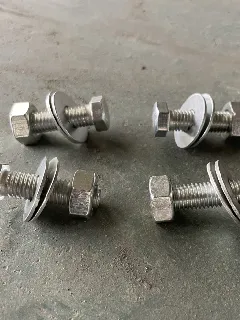loading...
- No. 9, Xingyuan South Street, Dongwaihuan Road, Zaoqiang County, Hengshui, Hebei, China
- admin@zjcomposites.com
- +86 15097380338
- Welcome to visit our website!
fiberglass walkway grating
The Benefits of Fiberglass Walkway Grating A Modern Solution for Safe and Efficient Walkways
In the world of construction and infrastructure, materials play a crucial role in determining the safety, durability, and efficiency of pedestrian walkways. Fiberglass walkway grating has emerged as a modern solution, offering a plethora of benefits that make it an ideal choice for various applications. This article will explore the advantages of using fiberglass grating, its versatility, and the reasons why it is becoming increasingly prevalent in both industrial and commercial settings.
What is Fiberglass Walkway Grating?
Fiberglass walkway grating is made from fiberglass-reinforced plastic (FRP), a composite material that combines strength with lightweight properties. This type of grating is designed to support pedestrian traffic while providing a durable surface that resists corrosion and wear. The unique manufacturing process allows for a variety of designs, colors, and thicknesses, making it suitable for various environments.
Advantages of Fiberglass Grating
1. Corrosion Resistance One of the most significant advantages of fiberglass grating is its resistance to corrosion. Unlike traditional materials like steel or aluminum, fiberglass does not rust or degrade when exposed to harsh chemicals, saltwater, or extreme weather conditions. This makes it an ideal choice for locations subjected to corrosive environments, such as chemical plants, water treatment facilities, and coastal areas.
2. Lightweight and Easy to Install Fiberglass grating is much lighter than metal alternatives, making it easier to handle and install. This can lead to reduced labor costs and time saved on installation. The ease of maneuverability means that even large sections of grating can be installed with minimal equipment and personnel.
fiberglass walkway grating

3. Safety Features Safety is a primary concern when designing walkways. Fiberglass grating can be produced with anti-slip surfaces, which provide enhanced traction, reducing the risk of slips and falls—especially in wet or oily conditions. Additionally, the open grid design allows for excellent drainage, preventing water accumulation on the surface.
4. Durability and Longevity When properly maintained, fiberglass grating can last for decades, proving to be a cost-effective solution in the long run. Its resistance to UV degradation further extends its lifespan, making it suitable for both indoor and outdoor applications.
5. Environmentally Friendly The production of fiberglass grating generates less waste compared to traditional materials. Furthermore, fiberglass is often made from recycled materials and can be recycled at the end of its lifespan, contributing to a more sustainable building practice.
6. Versatility in Applications Fiberglass walkway grating can be used in various settings, including industrial plants, commercial buildings, and recreational areas. Its customizable designs suit a wide range of applications, from heavy-duty industrial use to aesthetic solutions for parks and walkways.
Conclusion
As industries continue seeking innovative solutions for infrastructure, fiberglass walkway grating stands out for its unique combination of strength, safety, and efficiency. Its resistance to corrosion and harsh conditions, along with its lightweight nature and safety features, make it a reliable choice for any project. Whether for industrial environments or public spaces, fiberglass grating offers a modern and sustainable option that meets the needs of today's construction demands. As awareness of its numerous benefits spreads, it is likely that fiberglass walkway grating will continue to gain traction as a preferred material for walkways across various sectors.
-
GRP Structures: The Future of Lightweight, High-Performance EngineeringNewsJun.20,2025
-
FRP Water Tank: High-Performance Storage for Corrosive and Clean Water SystemsNewsJun.20,2025
-
FRP Square Tube: The New Industry Standard for Chemical and Structural ApplicationsNewsJun.20,2025
-
FRP Pultruded Profiles: The Ultimate Choice for Lightweight Structural StrengthNewsJun.20,2025
-
FRP Handrails: The Safer, Smarter, and Stronger Choice for Modern InfrastructureNewsJun.20,2025
-
FRP Grating: The Smart Solution for Durable, Lightweight Industrial FlooringNewsJun.20,2025
-
Why Choose a Galvanized Water Tank for Your Storage NeedsNewsMay.21,2025
